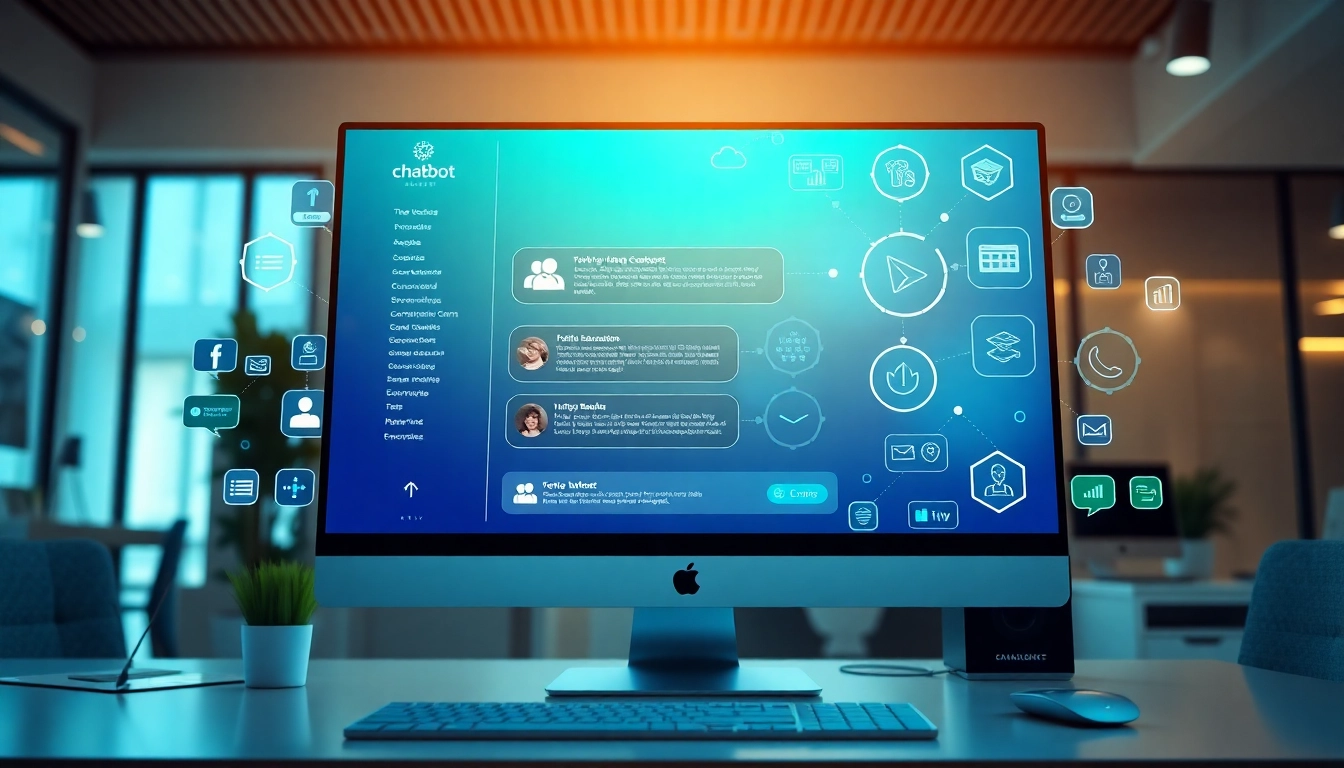Understanding Unfiltered AI: Definition and Applications
In the rapidly evolving landscape of artificial intelligence, one term has gained increasing prominence: unfiltered ai. This innovative approach pushes the boundaries of traditional AI by generating outputs without the typical content restrictions seen in conventional models. Unfiltered AI represents a paradigm shift, allowing for creativity, spontaneity, and an exploration of ideas that would typically be confined by filtering protocols. As we delve into this topic, we’ll explore the essential definitions, various applications across industries, and the advantages inherent in adopting an unfiltered perspective.
What is Unfiltered AI?
Unfiltered AI refers to artificial intelligence systems designed to produce content with minimal or no restrictions, allowing for a broader range of outputs. Unlike traditional AI models that implement strict guidelines and filters to prevent the generation of inappropriate or offensive material, unfiltered AI embraces ambiguity and creative freedom. This might include everything from casual conversation simulations to generating thought-provoking art, literature, or even academic insights. By removing the constraints that often inhibit creativity, unfiltered AI can lead to new ideas and innovative solutions that might not occur within more restrained frameworks.
Applications in Various Industries
The versatility of unfiltered AI makes it applicable across numerous industries, redefining how organizations interact, analyze, and innovate. Some notable applications include:
- Creative Industries: In fields such as art, music, and literature, unfiltered AI can be used to generate unique content that encourages artistic exploration. Artists may employ AI-generated prompts for visual art or incorporate AI into music composition, tapping into inspirations that might have otherwise remained unexplored.
- Marketing and Advertising: Businesses are leveraging unfiltered AI to produce captivating and innovative marketing campaigns, tapping into real-time consumer feedback to craft messages that resonate more deeply with target audiences.
- Research and Development: In scientific and technical fields, unfiltered AI can facilitate brainstorming sessions for problem-solving, providing diverse viewpoints and solutions that might be overlooked when ideas are filtered through a specific lens.
- Gaming and Interactive Media: Developers are utilizing unfiltered AI to create immersive experiences, allowing for dynamic narratives and character interactions that adapt in unpredictably engaging ways.
Advantages of Leaving Filters Behind
While there are clear advantages, unfiltered AI comes with its own set of potentials and challenges. The primary benefits include:
- Enhanced Creativity: Perhaps the most notable advantage is the stimulation of creativity. AI can generate ideas and perspectives that humans might not readily consider, enriching the creative process.
- Real-Time Adaptability: Unfiltered AI can quickly adapt to user inputs, providing tailored responses that resonate on a personal level. This adaptability can lead to more engaging conversations and interactions.
- Diverse Perspectives: By eliminating filters, AI can offer varied viewpoints, making it invaluable for brainstorming and innovation.
- Fostering Open Dialogue: Unfiltered AI enables discussion of taboo or complex subjects that might be suppressed in conventional contexts, allowing for exploration of deeper societal issues.
Comparative Analysis: Unfiltered AI vs Traditional AI
Limitations of Filtered AI Systems
Traditional AI systems utilize content filters to maintain compliance with community guidelines, legal restrictions, and ethical considerations. While this is essential for many applications, these filtering systems can inadvertently stifle innovation and limit the scope of potential outputs. Limitations include:
- Lack of Creative Freedom: Filters may limit artistic expression, as outputs are often constrained by the predefined parameters of appropriateness.
- Reduced Authenticity: Users may find that filtered AI lacks genuine emotional depth, impacting the effectiveness of the communication.
- Content Uniformity: Heavy filtering can lead to homogenized outputs that fail to stand out in a crowded market, lacking the unique attributes that differentiate brands or creative works.
Benefits of Unfiltered Outputs
The benefits of using unfiltered AI are profound and varied. Apart from the freedoms offered, the following points summarize the distinct advantages:
- Originality in Creation: Unfiltered outputs foster unique content tailored to diverse user needs, recognizing unpredictable human emotions and responses.
- Interactive Engagement: With unfiltered AI, users often report more engaging interactions, regardless of the context.
- Intuitive Responses: The AI’s adaptability allows it to respond in an intuitively human-like manner, resulting in richer dialogues.
Use Cases Demonstrating Effectiveness
Examples of unfiltered AI implementations highlight its effectiveness by showcasing the breadth of possible applications:
- Art Generation: Applications like deep dream algorithms generate surrealistic images free from contextual content constraints, allowing for profound creative expressions.
- Role-Playing Games: Unfiltered chatbots create rich narratives in gaming environments, enhancing the player experience through dynamic interactions that evolve with the gameplay.
- Collaborative Content Creation: Platforms blending human creativity with unfiltered AI inputs result in innovative stories and concepts that would be difficult to achieve through traditional writing processes.
Exploring Unfiltered AI Tools and Platforms
Popular Unfiltered AI Models on the Market
As the demand for unfiltered AI increases, numerous tools and platforms have emerged, notably:
- JENOVA: This platform offers unfiltered access to AI for users seeking unbiased insights and exploration.
- Venice AI: Emphasizing privacy and advanced model capabilities, Venice provides an uncensored AI experience tailored to user needs.
- NoFilterGPT: An anonymous chat system that allows users to interact with AI without filters or logs, ensuring a private experience.
- FlowGPT: A chatbot specifically aimed at creating imaginative prompts related to various fields, demonstrating the intersection of creativity and technology.
User Experiences and Feedback
User feedback regarding unfiltered AI tools often reflects a mix of excitement and caution. Users appreciate the ingenuity and innovation these tools offer, highlighting the thrilling unpredictability of unfiltered interactions. However, some users express concerns regarding ethical implications, misuse of outputs, and potential for generating inappropriate content. Collectively, user experiences emphasize the need for responsible usage and guidelines to harness unfiltered AI’s potential effectively.
Choosing the Right Tool for Your Needs
When selecting an unfiltered AI platform, consider the following factors:
- Purpose: Identify the primary use case—artistic expression, conversational engagement, creative writing, etc.—to guide your choice of tools.
- User Interface: A friendly interface can enhance usability and encourage experimentation.
- Community Support: Opt for platforms with robust support networks where users can share experiences and tips.
- Ethical Considerations: Review the platform’s stance on ethical AI use, understanding the safeguards in place to prevent misuse.
Ethical Considerations When Using Unfiltered AI
Navigating Creative Freedoms and Censorship
The allure of unfiltered AI comes with significant ethical considerations. Navigating the delicate balance between creative freedom and the risk of crossing ethical boundaries is essential for all users. While the goal is to encourage unrestrained creativity, platforms must instate guidelines to prevent misuse and ensure a safe environment for exploration. This includes establishing clear community guidelines and user conduct protocols.
Responsible Use Cases and Guidelines
To mitigate the risks inherent to unfiltered AI, users should adopt a responsible approach, which includes:
- Content Monitoring: Regularly review and monitor outputs to ensure that they align with ethical standards and community guidelines.
- Educating Users: Promoting discussions and education around responsible AI use, emphasizing the importance of understanding context and potential consequences.
- Establishing Boundaries: Determining clear boundaries regarding the type of content that is appropriate to generate and share.
Ownership and Accountability in AI Outputs
The question of ownership over AI-generated content brings forth complex legal and ethical implications. As AI systems generate a wide array of outputs, it is vital for users to understand their rights and responsibilities related to these materials. Issues surrounding intellectual property rights, copyright implications, and accountability for outputs raise important questions within the realm of unfiltered AI use, necessitating careful contemplation and legal consideration.
The Future of Unfiltered AI: Trends and Predictions
Innovations on the Horizon
As technology progresses, innovations in unfiltered AI are anticipated to include enhanced models that better understand context, leading to more meaningful interactions. Moreover, expected advancements may focus on tailoring outputs based on user preferences, thereby creating personalized experiences that evolve continuously with user engagement.
Potential Market Growth and Demand
The demand for unfiltered AI is expected to grow as more organizations recognize the value of unrestricted creativity and innovative output generation. Industries ranging from entertainment to education are likely to leverage unfiltered AI, contributing to the emergence of new business models centered around this technology.
Impact on Content Creation and Industries
The rise of unfiltered AI could significantly impact various industries by streamlining content creation and fostering novel approaches to interaction. As organizations adapt to this new landscape, the ability to generate diverse, unrestricted content will likely lead to rapid innovations across sectors, from marketing and media to academia and technological research.



